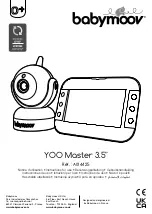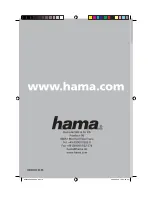
2017/08/16 Rev. A1
18
Category
Systolic(mmHg)
Diastolic(mmHg)
Desirable
120 and
80
Normal
120-129 and/or
80-84
Pre hypertension
130-139 and/or
85-89
Hypertension:
≥140 and/or
≥90
Stage 1 Hypertension
140-159 and/or
90-99
Stage 2 Hypertension
160-179 and/or
100-109
≥180 and/or
≥110
These categories were defined by the American Heart Association. This chart applies to adults
age 20 and older.
15.3. What is morning hypertension (morning surge)?
Morning high blood pressure or morning surge is defined as the weekly average for morning
blood pressure reading measured within 1 hour to 2 hours after awakening in the morning and
exceeding 135/85mm Hg. Studies have shown that exaggerated morning blood pressure surge is a
risk for cardiovascular events which includes ischemic and hemorrhagic stroke. Cardiovascular
events have been shown to be exaggerated in the morning to coincide with morning high blood
pressure. In fact heart attack, stroke and heart failure have been shown to fall particularly on a
Monday amongst all the other days of the week.
Organ damage and diabetic complications have also been shown to be linked with morning blood
pressure surges just in the same way as small artery disease and multiple cerebral infarcts in elder
members of society. Morning high blood pressure has shown some correlation with initial stage
and progression of atherosclerosis. Patients with well controlled blood pressure may still have
high morning blood pressure and this happens in 50% of the cases. Patients with morning
hypertension have a 78% more chance of stroke compared with 48% of other hypertensive
patients without morning high blood pressure. Morning hypertension has also been associated
with changes in heart size and rhythm. This may lead to heart attack or heart failure.
Morning Hypertension can only detect within 1 hour to 2 hours after awakening, recommended
user monitor their own blood pressure at home.
Reference Standard
·
IEC 60601-1:2005+A1:2012 Medical electrical equipment - Part1: General requirements for
safety and essential performance.
·
IEC 60601-1-2:2014 Medical electrical equipment - Part1-2: General requirements for basic
safety and essential performance - Collateral standard: Electromagnetic compatibility –
Requirements and tests
·
IEC 80601-2-30:2009+A1:2013 Medical electrical equipment - Part 2-30: Particular
requirements for the basic safety and essential performance of automated non-invasive
sphygmomanometers.
·
ANSI/AAMI/ISO 81060-2:2009 Non-invasive sphygmomanometers - Part 2:Clinical validation




































